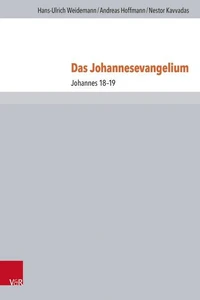Anyone who wishes to manage their sources adequately must work with categories that help to bring order to the transcribed material. In many cases, such categories simultaneously shape the way in which we evaluate our sources. Critical reflection of the chosen categories is therefore crucial for robust historical study. This rings especially true when certain categories are not viewed through neutral eyes, but through polemically judgemental eyes.
One extreme case would be the category of "apocryphalness". In some areas, associations like "fraudulent" versus and "secret" - interlinked to this term in Antiquity - are still shaping the way Christian apocrypha are considered to this day. Closely associated with this is the use of the adjectival categories like "(proto)-orthodox", "majority church" versus those like "heretical" (again polemically pejorative).
In their chapters, the contributors demonstrate not only how the set limits - as referred to the categories above - do indeed play a role, but more importantly, where these limits have been exceeded and where we must therefore work with new and different categories to understand the meaning of "apocryphal" writings and/or writings that have "become apocryphal" in terms of the history of an ancient Christianity perceived as multi-dimensional and dynamic.
The following questions play a significant role in our understanding of this: In which contexts and by which groups are "newly apocryphal" writings used? Where do apocryphal writings or those "newly apocryphal" play a contextual role that would, nowadays, be perceived as "orthodox"? Which functions are assign thereto?
Anyone who wishes to manage their sources adequately must work with categories that help to bring order to the transcribed material. In many cases, such categories simultaneously shape the way in which we evaluate our sources. Critical reflection of the chosen categories is therefore crucial for robust historical study. This rings especially true when certain categories are not viewed through neutral eyes, but through polemically judgemental eyes.
One extreme case would be the category of "apocryphalness". In some areas, associations like "fraudulent" versus and "secret" - interlinked to this term in Antiquity - are still shaping the way Christian apocrypha are considered to this day. Closely associated with this is the use of the adjectival categories like "(proto)-orthodox", "majority church" versus those like "heretical" (again polemically pejorative).
In their chapters, the contributors demonstrate not only how the set limits - as referred to the categories above - do indeed play a role, but more importantly, where these limits have been exceeded and where we must therefore work with new and different categories to understand the meaning of "apocryphal" writings and/or writings that have "become apocryphal" in terms of the history of an ancient Christianity perceived as multi-dimensional and dynamic.
The following questions play a significant role in our understanding of this: In which contexts and by which groups are "newly apocryphal" writings used? Where do apocryphal writings or those "newly apocryphal" play a contextual role that would, nowadays, be perceived as "orthodox"? Which functions are assign thereto?

 , qui est-ce ?
, qui est-ce ?